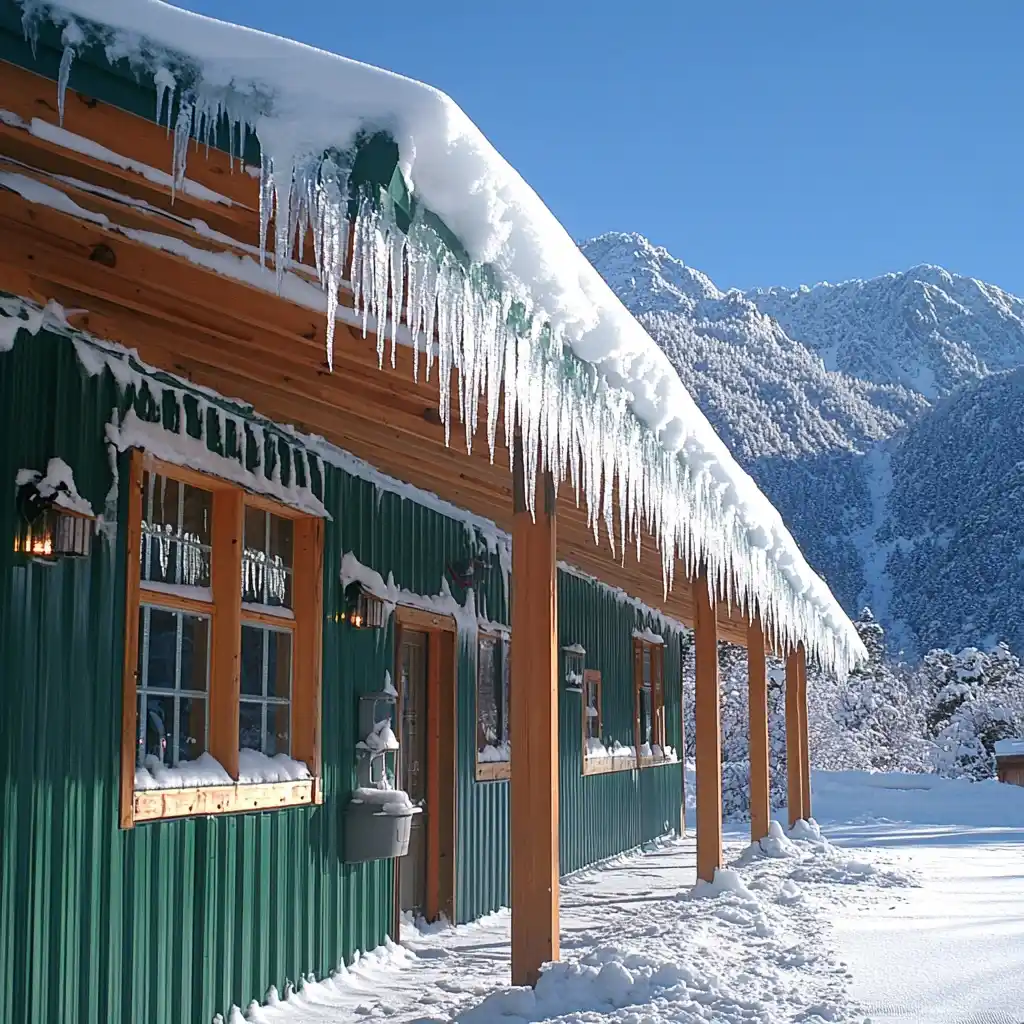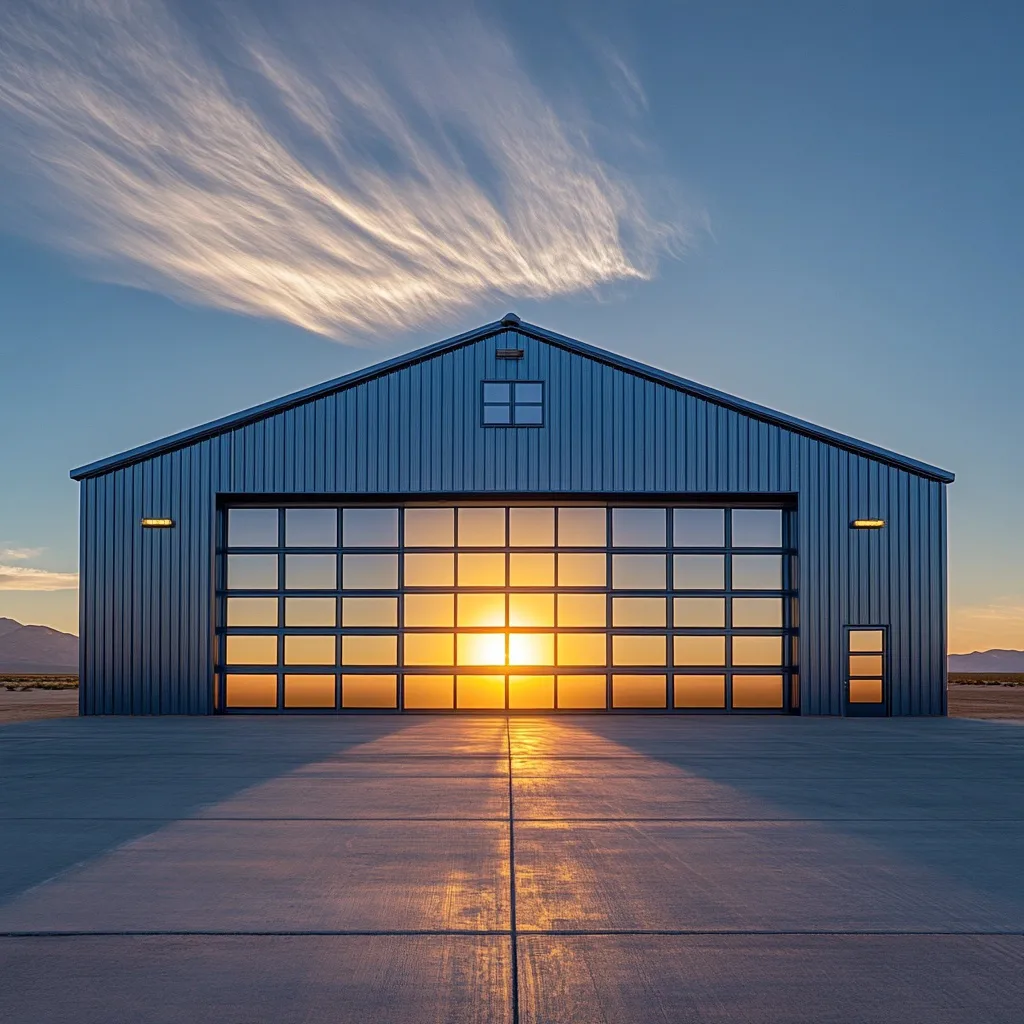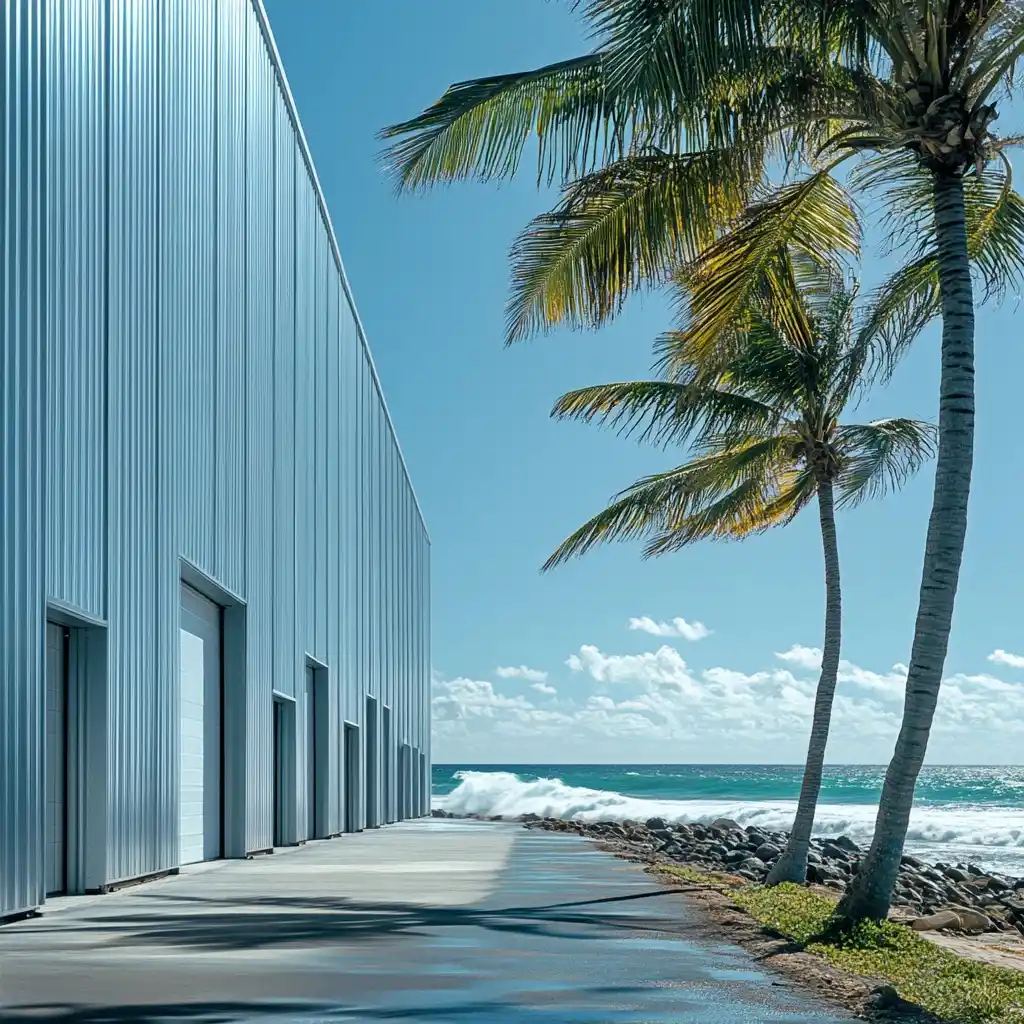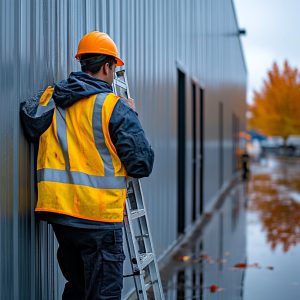Metal buildings are engineered to withstand the test of time, but the climate plays a crucial role in determining their long-term durability and maintenance needs. Join the metal building experts from Champion Buildings Inc. as we explore how varying weather conditions—from harsh winters to scorching summers—affect the structural integrity and upkeep of prefabricated metal buildings.
The Role of Climate on Metal Buildings
Metal buildings offer exceptional durability and efficiency, but the local climate plays a critical role in determining their lifespan and maintenance needs. Extreme temperatures, moisture, and severe weather events can affect metal garages, metal commercial buildings, and metal agricultural buildings in several ways.
Understanding these effects can help building owners and facility managers take proactive steps to ensure that their structures remain safe, cost-effective, and long-lasting.
Rust and Corrosion in Humid or Coastal Areas
In regions with high humidity or coastal environments, metal buildings are more susceptible to rust and corrosion. Salt particles carried by sea breezes can accelerate the oxidation process, leading to surface degradation and potential structural issues.
Expansion and Contraction Due to Temperature Swings
Metal naturally expands when heated and contracts when cooled. These fluctuations can cause gradual stress, resulting in loose fasteners, warped panels, or joint failures if not managed properly.
Snow Load Stress in Colder Regions
In colder climates, heavy snow accumulation can place significant strain on metal buildings. Excess weight may damage the roof or support structure if the building isn’t engineered to handle the load.
Wind Damage in Storm-Prone Areas
Storm-prone regions require reinforced metal buildings. High winds can detach panels, damage the roof, or even compromise the structure if proper anchoring and bracing aren’t in place.
Best Maintenance Practices for Different Climates
Extending the lifespan of your metal building starts with adopting maintenance strategies tailored to your local climate. Here’s how to protect metal buildings in various environmental conditions.
Cold and Snowy Climates
In colder regions, it’s essential to manage snow and ice to prevent structural stress and moisture problems:
- Inspect for snow accumulation and remove excess weight.
- Use proper insulation to prevent condensation.
- Seal gaps to stop ice from forming inside the structure.
Hot and Humid Climates
In hot and humid areas, controlling moisture and corrosion is key to maintaining metal integrity:
- Apply corrosion-resistant coatings to prevent rust.
- Improve ventilation to reduce trapped moisture.
- Use stainless steel or galvanized metal for better durability.
Coastal and Salty Environments
Buildings in coastal areas must contend with salt corrosion, so choosing the right materials and maintenance routine is vital:
- Choose aluminum or coated steel to resist salt corrosion.
- Rinse exterior surfaces regularly to remove salt buildup.
- Apply protective sealants designed for marine environments.
Storm-Prone Areas (Hurricanes, High Winds, Tornadoes)
For structures in storm-prone areas, reinforcing the building and prompt post-storm inspections can prevent serious damage:
- Reinforce with wind-rated anchors and bracing systems.
- Install impact-resistant doors and windows.
- Inspect after storms for loose panels or structural damage.
Choosing the Right Materials for Longevity
Choosing the right materials is essential for reducing maintenance costs and maximizing the longevity of your metal building. By carefully selecting durable components during the metal building design phase, you can create a structure that withstands the challenges of various climates and minimizes future repairs.
Choose:
Galvanized or Stainless Steel
These materials offer excellent rust resistance, ensuring that your building maintains its strength and appearance over time.
Powder-Coated Finishes
Applying a powder-coated finish adds a protective layer that guards against scratches, fading, and environmental wear.
High-Quality Insulation
Effective insulated wall panels help regulate temperature and prevent moisture buildup, reducing the risk of condensation and corrosion.
Common Questions About Metal Buildings and Climate
How do I prevent rust in my metal building?
To prevent rust, it’s important to use materials like galvanized steel or aluminum, and to apply protective coatings. Additionally, ensuring proper ventilation helps reduce moisture buildup, which further minimizes the risk of corrosion.
Are metal buildings good for extreme temperatures?
Yes, metal buildings can perform well in extreme temperatures when they are equipped with proper insulation and expansion joints. These features help manage temperature changes effectively, maintaining structural integrity even in harsh climates.
How do metal buildings compare to other building materials in varying climates?
Metal buildings often outperform materials like wood or concrete, thanks to engineered features such as insulated panels, protective coatings, and wind-rated components that handle extreme temperatures, high winds, and heavy snow loads. This resilience makes them a versatile choice for varying climates.
How often should I inspect my metal building?
Regular inspections are key to long-term durability of metal buildings. It’s recommended to inspect your metal building at least twice a year, and always after major storms or extreme weather events to promptly address any potential damage.
Withstand Harsh Climates–Design Your Custom Metal Building Today
A well-maintained metal building can last decades, even in tough climates. Choosing the right materials and staying on top of maintenance will keep it in top condition. For expert guidance, consult our metal building specialists at Champion Buildings Inc.
Our team will guide you through every step—from selecting durable materials to integrating innovative design features—ensuring a cost-effective, resilient steel structure built to last.
Get started today by calling us at (800) 942-6812 or filling out our online contact form.




